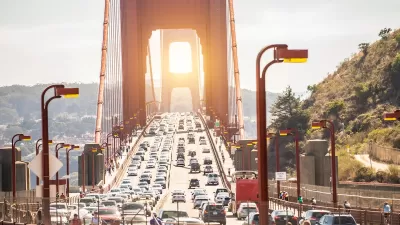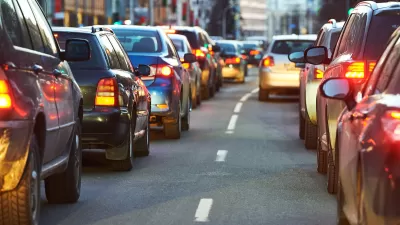A national study shows, once again, that increasing road supply induces additional vehicle travel, particularly over the long run.

A new study, Road Capacity as a Fundamental Determinant of Vehicle Travel, published by the University of California Institute of Transportation Studies, indicates that roadway supply is a key factor affecting the amount that people drive in a community. It uses U.S. national data to analyze factors that affect vehicle travel. It finds that road capacity has a larger effect on per capita VMT than factors traditionally considered, such as income and fuel prices. This provides aggregate evidence that roadway expansions induce additional vehicle travel, particularly over the long run.
Road supply does not just affect traffic speeds and automobile accessibility but also impacts pedestrian connectivity, land development, transit service feasibility, plus household residential and employment location decisions. The researchers point out that per capita vehicle travel peaked early in the Twenty First Century so road capacity rather than income or fuel price has emerged as the fundamental factor affecting vehicle travel.
The study concludes that achieving VMT reduction targets are likely to require road capacity reductions.
FULL STORY: Road Capacity as a Fundamental Determinant of Vehicle Travel

Planetizen Federal Action Tracker
A weekly monitor of how Trump’s orders and actions are impacting planners and planning in America.

Map: Where Senate Republicans Want to Sell Your Public Lands
For public land advocates, the Senate Republicans’ proposal to sell millions of acres of public land in the West is “the biggest fight of their careers.”

Restaurant Patios Were a Pandemic Win — Why Were They so Hard to Keep?
Social distancing requirements and changes in travel patterns prompted cities to pilot new uses for street and sidewalk space. Then it got complicated.

Platform Pilsner: Vancouver Transit Agency Releases... a Beer?
TransLink will receive a portion of every sale of the four-pack.

Toronto Weighs Cheaper Transit, Parking Hikes for Major Events
Special event rates would take effect during large festivals, sports games and concerts to ‘discourage driving, manage congestion and free up space for transit.”

Berlin to Consider Car-Free Zone Larger Than Manhattan
The area bound by the 22-mile Ringbahn would still allow 12 uses of a private automobile per year per person, and several other exemptions.
Urban Design for Planners 1: Software Tools
This six-course series explores essential urban design concepts using open source software and equips planners with the tools they need to participate fully in the urban design process.
Planning for Universal Design
Learn the tools for implementing Universal Design in planning regulations.
Heyer Gruel & Associates PA
JM Goldson LLC
Custer County Colorado
City of Camden Redevelopment Agency
City of Astoria
Transportation Research & Education Center (TREC) at Portland State University
Camden Redevelopment Agency
City of Claremont
Municipality of Princeton (NJ)





























